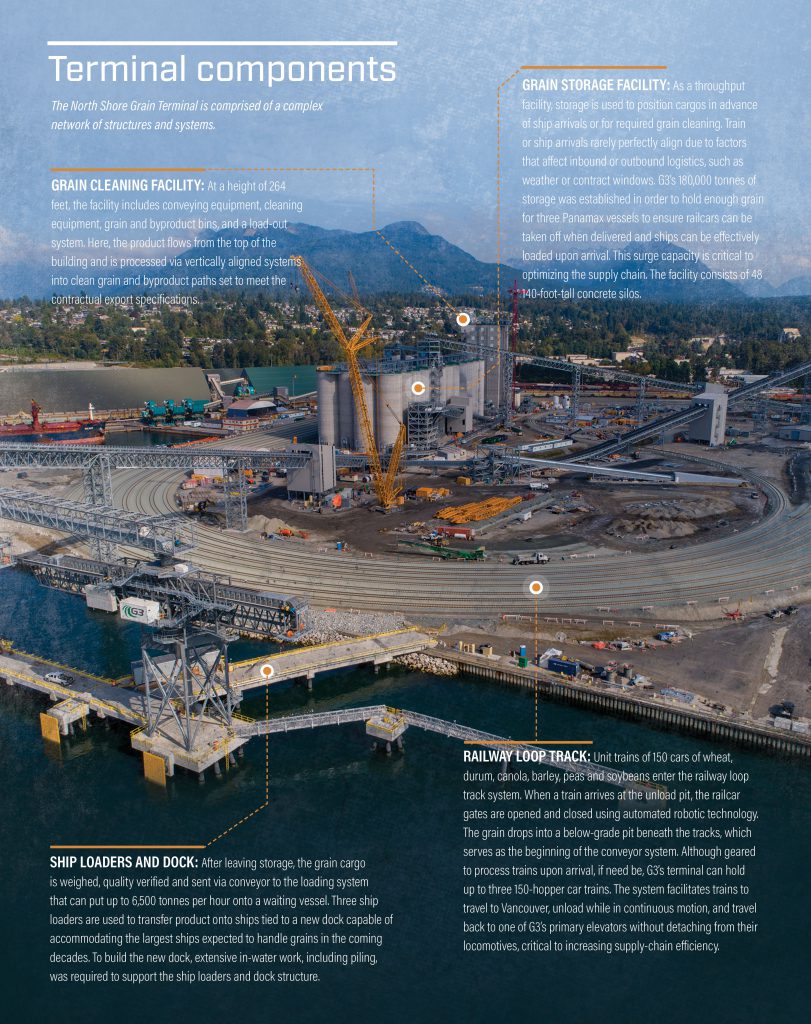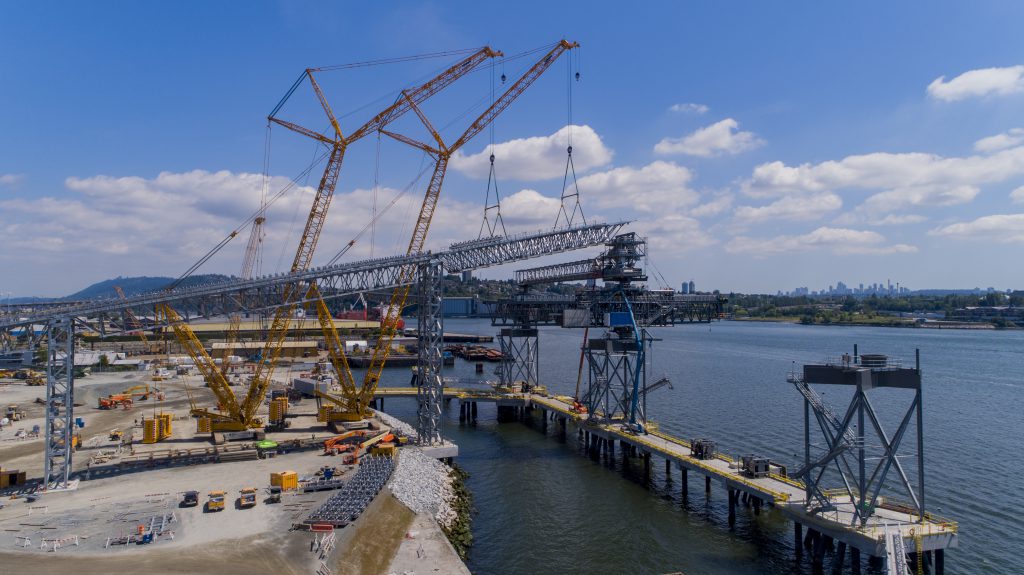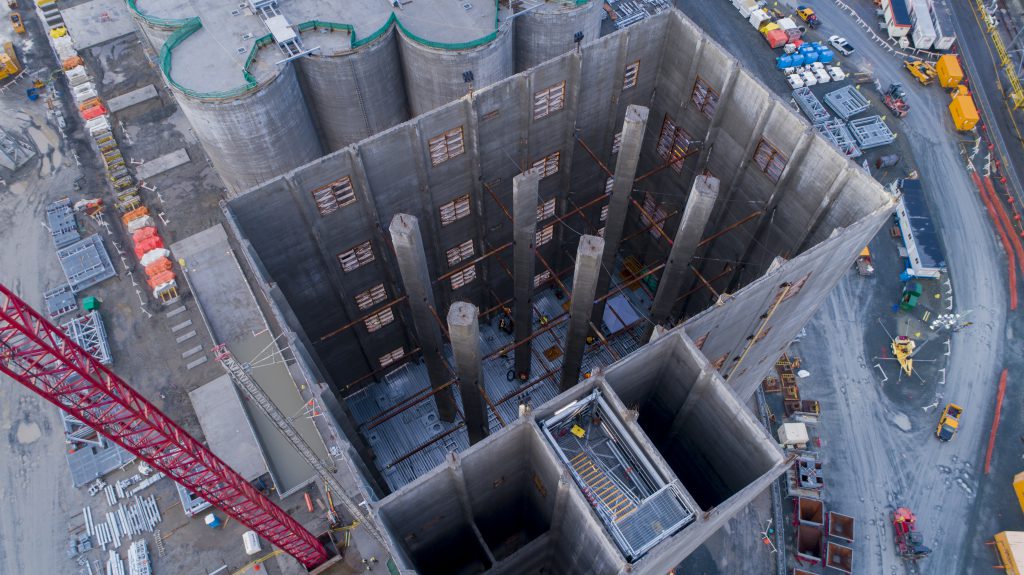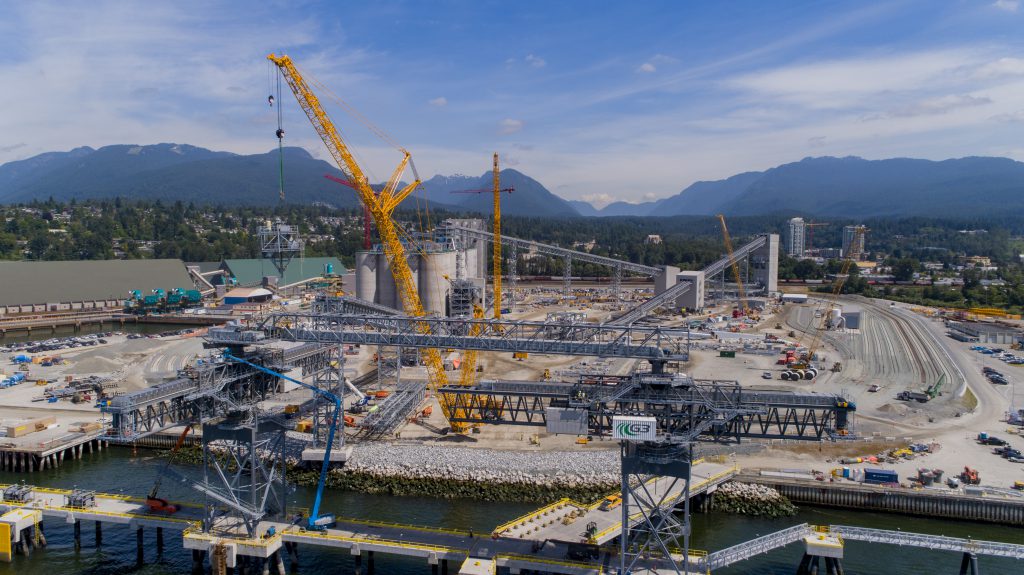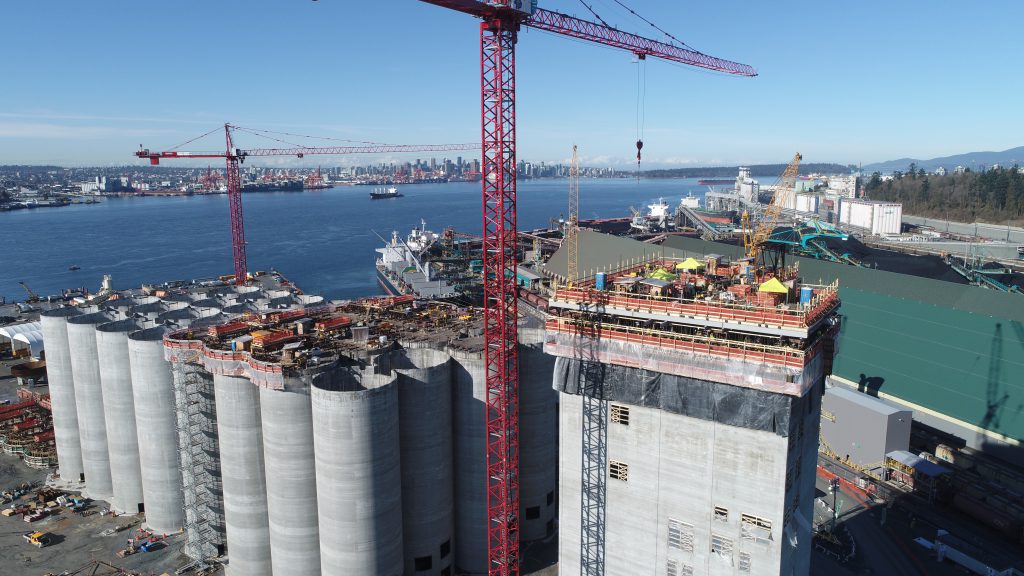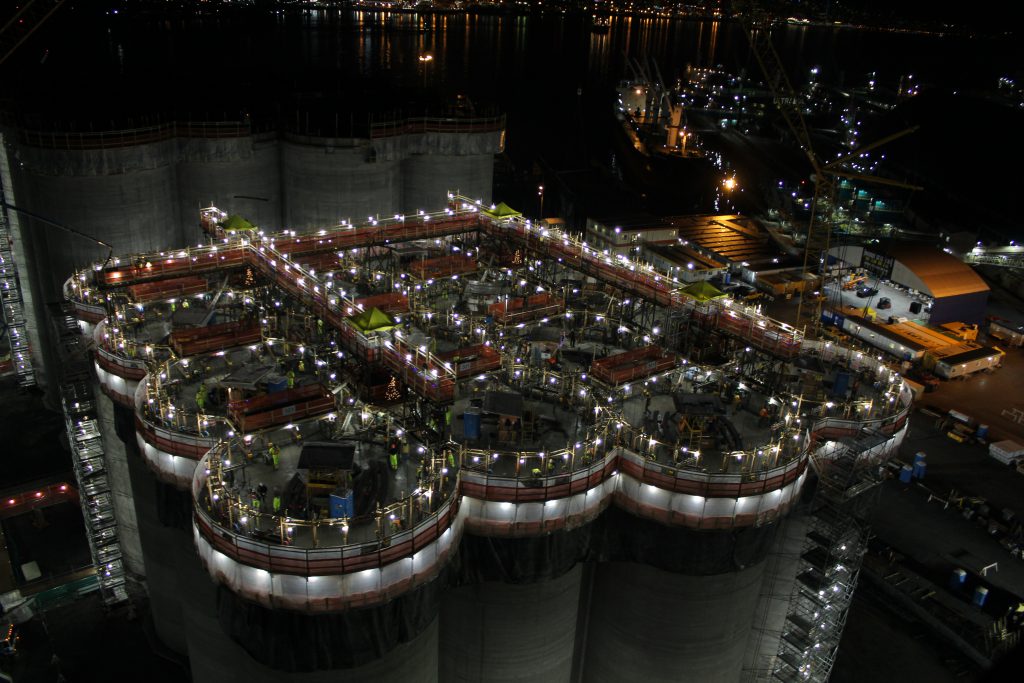More than 90 percent of Canadian farmers send their products to markets across the globe. With agricultural-related exports accounting for about $56 billion each year, they are a critical component of Canada’s economy.
Efficiently moving these commodities from the farm to the end customer is paramount to meeting the continued global demand for food.
G3 is an integral player in the agricultural export market, with an impressive grain handling network that spans Canada coast-to-coast. The most recent addition, G3 Terminal Vancouver (G3TV), is strategically located on the north shore of Vancouver’s Burrard Inlet. It is the final component of G3’s supply-chain efficiency strategy, effectively bringing farmers’ grain and oilseeds to market. It’s also the first new grain terminal constructed at the Port of Vancouver since the 1970s — and proudly built by Kiewit.
Strong partnership is key to success
G3 Terminal Vancouver is a good example of how a strong partnership between the client and Kiewit positively impacts a project. The relationship began in 2014 when T.E. Ibberson Company, a subsidiary of Kiewit that had recently completed a similar grain export terminal project in Longview, Washington, was engaged to start work on the terminal.
Through an early contractor involvement (ECI) model, the two entities worked together to develop the preliminary scope and pricing for the project.
“I have been involved in large projects prior to G3TV, and good scope definition and budgeting early in a project life are absolutely key to success,” said Tom Price, vice president of Project Planning and Engineering at G3.
Kiewit was at G3TV for about two and a half years, working with G3 to refine the project’s scope.
“Through an iterative and engaged process, concepts were refined, and we were able to achieve very good project definition,” he said. “Our project is nearing completion and deviations from final results of the ECI process have been few. The Kiewit team has been great to deal with both from an overall project and individual people perspective.”
Cooperation and creativity
Kiewit subject matter experts from across North America began joining the team in 2015, bringing valuable experience in local infrastructure, permitting, advanced engineering, EPC processes, structural steel and procurement of specialty equipment. After a key development permit was secured, G3 and Kiewit finalized a contract for the engineering, procurement, construction and commissioning of the terminal.
“Working through the challenges of construction on a brownfield site in a hyper-sensitive, environmentally-focused urban environment has been daunting,” said G3 Vice President and General Manager Bill Mooney. “The Kiewit team along with G3 and its owner’s engineers have cooperatively and creatively overcome some substantive challenges.”
“As we head to commercialization in mid-2020, you can see the incredible potential ahead for G3 as the terminal completes the unique state-of-the-art loop track to port terminal logistics model,” added Mooney. “Making railways and vessels more efficient while doing it in an environmentally effective way will provide the competitive advantage.”
An expansive scope of work
Construction of the state-of-the art grain export terminal officially began in March 2017, with the removal of existing buildings and preparation work on the 58-acre site. It represents the largest industrial project Kiewit has ever undertaken.
“While the majority of our large, high-profile work is in the infrastructure and energy markets, industrial projects, such as G3TV, have allowed us to fully leverage our expertise and expand our project portfolio,” said Don Jacobsen, project director for Kiewit. “G3 brought an innovative concept and vision to us and we worked together, side-by-side, to make it a reality.”
Kiewit used a collaborative model to streamline construction schedules and optimize costs. This included an in-house design and engineering team that was fully integrated with construction operations throughout the life of the project.
“When design and construction report up through one centralized channel, the team has more control over priorities,” said David Roth, commercial manager for Kiewit. “We are better able to make sure that we have the right resources in place and have the capacity to do more thorough, in-depth constructability reviews.”
From start to finish, Kiewit’s scope of work was expansive, starting with the demolition of existing buildings on the site and the construction of an underpass and access roads.
The current dock required substantial modifications to accommodate large shipping vessels. New structures were built, including a cleaning facility, storage silos, a conveyor system, an administration building and a maintenance shop. The installation of a nearly 7-mile rail car loop rounded out the project scope.
Speed, efficiency and 10 million pounds of rebar
For the design of the terminal, the speed and efficiency of moving product through the terminal was essential and was greatly enhanced by the state-of-the-art loop track technology. With this technology, rail cars can be unloaded simultaneously while in motion and the unit train can remain intact. The system features robotic gate openers for continuous unloading. Full length loop tracks allow trains to pull directly into the site, avoiding the need to push or pull train components from the main line or switch to another track.
The most visible and notable operations involved the slip-poured structures, which included three annexes, each comprised of 16, 140-foot tall storage silos — a total of 48 silos. Extensive slip pour operations were also used on the 163-foot scale building and a 223-foot cleaning building, which required a crew of 250 people working around-the-clock for 12 days to complete.
In total, the project placed roughly 90,000 cubic yards of concrete and more than 9 million pounds of rebar.
With more than 17,000 linear feet of conveyors, the project required about 9,000 tons of structural steel work. Using detailed 3D modeling, the design of the structural steel was fully integrated with the mechanical equipment.
The terminal is strategically located at the Port of Vancouver, expanding opportunities for farmers to export grain.
Growing on the job
Across the entire project, Kiewit was able to self-perform about 80% of the work, which accounted for more than 1 million direct man-hours ― a testament to the company’s diverse capabilities.
“We were well-equipped to put the framework of the plant together. A lot of the work, such as the concrete slips and the steel going up in the air, are not that different from bridge or petro-chemical plant work. The only big difference is the mechanical equipment that comes in after the fact.” added Roth. “The job relied on standardized construction processes and project controls tools used throughout Kiewit and these were key factors in our success.”
For Kiewit employee Keifer MacDonald, who joined the project during startup, the company’s diverse capabilities translated into opportunities for career growth. From field engineer to lead engineer to superintendent to general superintendent, his responsibilities included running crews on night shift and overseeing a major supplier nearly 6,000 miles away.
“I gained meaningful hands-on experience. The opportunity to grow and learn has been my favorite part about working on this project,” MacDonald said. “We all brought good attitudes and teamwork to the job each and every day.”
